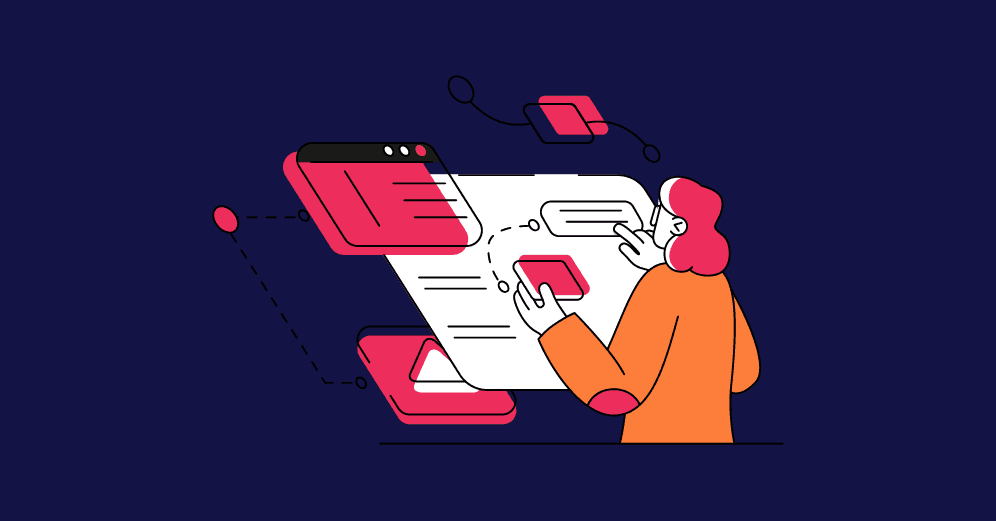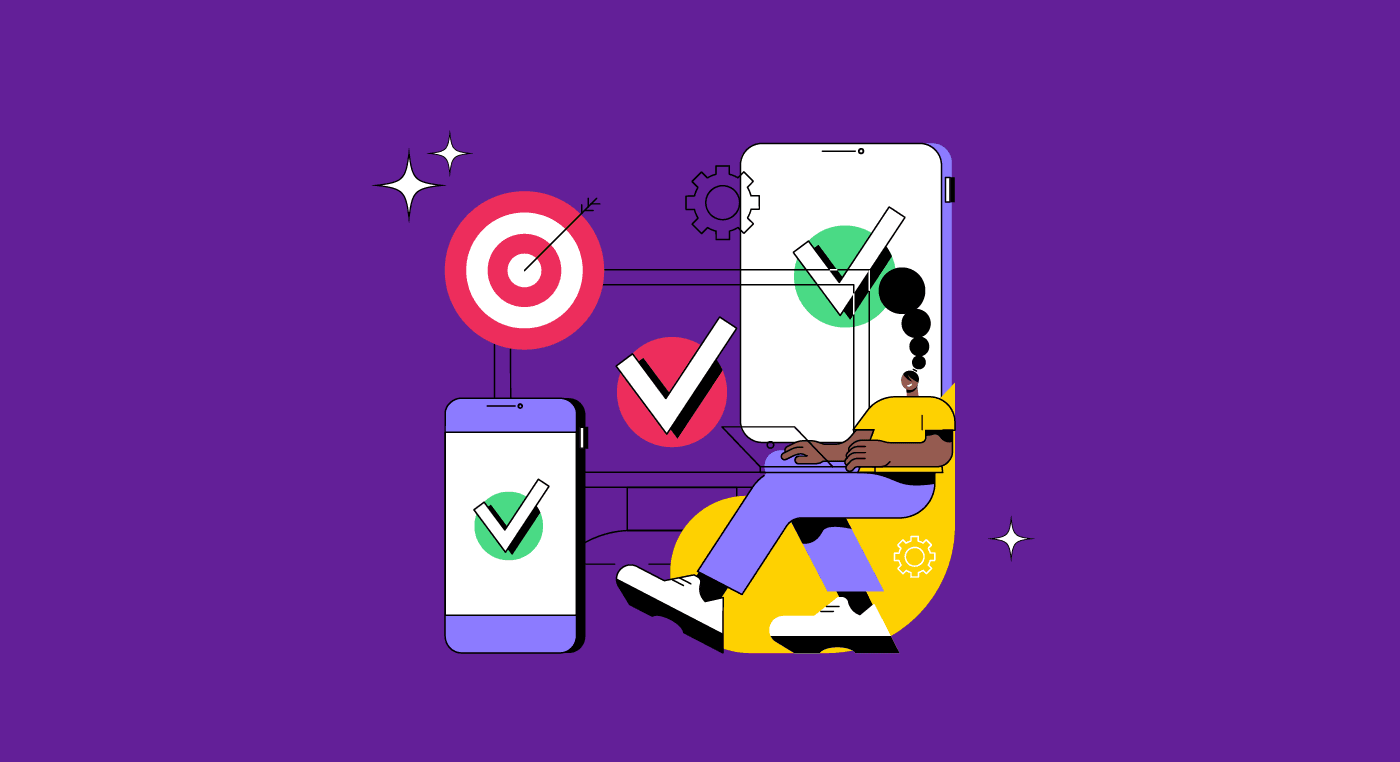UX Designers are responsible for making people enjoy navigating and interacting with digital products. If users are not provided with a pleasant experience on a website, chances are they wouldn’t visit it again and definitely wouldn’t recommend it to anyone else.
This leads us to million-dollar questions like: How do we avoid losing visitors to competitors? What makes users loyal to an app or website?
Among all the elements that keep users interested in your product, usability is definitely one of the most important.
To learn how to use usability to develop more friendly interfaces, stay with us!
What is usability?
Usability is a way to measure how easy it is to use a product.
Users don’t want to feel confused or lost while using a product, whether digital or not. Instead, people want to navigate intuitively and effortlessly without assistance.
Imagine if you had to delete an email on your phone, but you couldn’t manage to carry out the task because you couldn’t figure out how to do it.
Or if you wanted to buy new shoes and the website wouldn’t allow you to narrow down your search and filter by brand, size, or color.
Hard, isn’t it?
Perhaps it is easier to acknowledge usability when discussing digital products. But the truth is that this concept has more to do with user behavior than with the technology involved.
How is usability related to UX Design?

First of all, we should not confuse usability with UX Design. These concepts are related, but they are not synonyms.
Usability is part of UX Design, and the latter has many other elements included, like research, user satisfaction, and the company’s objectives.
Therefore, a website or app can simultaneously offer great usability but a bad user experience.
For example, an e-commerce store might provide good usability, and users can easily find what they are looking for. But that won’t do much if the website doesn’t work with major brands in the market.
In this case, users will get frustrated despite good usability, their experience won’t be pleasant, and they won’t buy any products at all.
Usability is older than you think
We live in a technological era. Computer interactions, UX Design, apps, Artificial Intelligence, the Internet of Things, etc. So because of this, we may relate usability to technology.
However, designing user-friendly products is not a recent concept. Discussions about usability came out at the beginning of the 20th century as an ergonomic concern.
Ergonomics was particularly crucial back in the world war period when weapons were adapted to be easily assembled by soldiers in the dark.
In the ’90s, usability embraced concepts like perception and cognitive load. Then, in 1998, usability was recognized as an ISO standard for determining the usability of a product and users’ satisfaction.
It was only a matter of time for usability to occupy the digital world, helping to develop better products and user-friendly interactions.
Why usability?
In digital products, usability is crucial for a single reason: survival.
Google anything and see how many websites appear. Hundreds? Thousands? The competition is too high. Users who struggle to use your website leave and go to a competitor’s site or app.
According to this, the Nielsen Norman Group (NN/g) defines five fundamental usability elements. Reflect on your product and ask yourself:
- Learnability: how easy it’s to learn how to use your website?
- Efficiency: how quickly do users accomplish tasks after learning them?
- Memorability: how easy do users remember how to use your website?
- Errors: how many errors do users usually make while interacting with your website, and how easy can they resolve them?
- Satisfaction: how pleasant is the navigation on your website?
If you consider these elements, you have a higher chance of developing a website with great usability.
Of course, usability alone is not responsible for the overall success of a product. Usability must work together with all other UX Design principles.
Take utility, for example. It doesn’t matter if your site has excellent usability if it is not useful for users.
Reading tip: Double Diamond To Help Define What The Real Problem Is
Usability testing: reviewing your website

As soon as the importance of usability is in mind, the next question should be:
- How can we review the usability of a product?
The answer is as simple as you can imagine: running usability tests!
The main goal of testing is to review and look for usability issues. Basically, a user is invited to accomplish predefined tasks within a website, app, or software.
Notice that you don’t have to wait for a product to be finished to run a usability test. In fact, UX Designers must run tests throughout the project. This way, UX teams can discover and fix problems upfront.
If you decide to run a usability test only at the end of the project, the list of errors will probably be too long and impact the whole project schedule.
Types of usability testing
There are different types of usability testing that you can use depending on the project’s objective and context:
- Moderated or Unmoderated;
- Remote or In-person;
- Quantitative or Qualitative.
Moderated or unmoderated
Moderated tests have a facilitator interacting with the user, helping them, and gathering information. The facilitator is usually a researcher or a UX Designer.
The role of the facilitator is to conduct the test, make questions, and observe the user.
Unmoderated tests with no facilitators run a bit differently. Users receive the task and then try to complete them without any assistance.
Remote or In-Person
As the name states, remote tests happen at distance. So the participant and the facilitator use software to run the test.
In-Person usability tests happen when both facilitator and user are in the same place, physically.
Qualitative or quantitative
This is about what will be analyzed; the objectives of the test.
Qualitative tests analyze user behavior during their journey; how they navigate and interact with the website.
Quantitative tests gather and analyze data during a specific period of time to accomplish a specific task, success rate, etc.
What are the usability testing outcomes?
Mainly, usability testing lets you know whether your website is user-friendly.
Moreover, testing will help you to:
- validate your product/ prototype;
- know if the website meets users’ expectations as well as the company’s;
- gather relevant data and information for the project;
- identify issues before the product’s launch;
- improve empathy with users.
More than just a good technique, user testing is crucial to increase user experience and the chances of success of your product.
How to improve a website’s usability?

There are five fundamental elements for you to work on to improve your website’s usability:
- Availability and Performance;
- Clarity;
- Relevancy and Credibility;
- Responsiveness;
- Learnability.
Availability and performance
Availability is crucial, and it means that your website must be available for users.
In other words, all the pages, links, buttons, etc., must be working correctly so the user can easily navigate the website.
If a webpage is under maintenance, make sure to communicate that to users so they don’t get frustrated once they try to access it.
Performance is related to how fast your website loads the information. Users don’t like to wait for a page to load. So bad performance can frustrate users and make them leave your website.
Be sure to host your website on a high-performance server and optimize your content, so the pages load faster and navigation is not slow.
Clarity
Clarity is one of the most important usability elements, so make sure to get it right.
When visiting your website, every user must understand how it works and how they can navigate through it. In addition, users need to know how to use all elements and interactions within the interface; and understand what they can and cannot do.
In that regard, clarity considers:
- Simplicity: don’t use elements that may distract users;
- Familiarity: use elements, expressions, and icons that users already know;
- Consistency: use the same colors, buttons, and typography all over your website;
- Visual Hierarchy: plan and organize your content to help the user’s journey;
- Feedback: use feedback to inform users whether their actions were successfully completed or not.
Reading tip: Visual Hierarchy: How To Prioritize and Highlight Information
Relevancy and Credibility
Relevancy considers the quality of the content. Can users solve their needs through your website?
Even with all usability elements in place, if your content isn’t relevant, then users will leave. Therefore, know your target audience in-depth to guarantee your product can solve their problems.
Additionally, relevancy is related to the credibility of your product and brand.
Users must trust your website, app, and any other interaction you provide. Moreover, credibility should be built around the product, the company’s identity, brand story, and all that can help build trust and authority.
Responsiveness
Responsiveness means that the website supports the great range of screens size available today.
Usability considers that users can visit and interact with your website no matter what device they’re using.
Learnability
Users must be able to quickly learn how to use your website without external help.
The secret behind this element is to develop intuitive interfaces that are simple and well structured. In other words, user-friendly.
Learnability is also important to make users remember how to use the website even if they were away for a while.
Usability and accessibility

As a final thought, it is important to highlight the relationship between usability and accessibility.
Accessibility is fundamental to grant access to every person — particularly people with disabilities — who wants to visit a website or interact with a product.
So usability and accessibility work together to provide a better user experience and UX Designers must consider:
- color contrast and font size;
- caption for images and subtitles for videos;
- keyboard shortcuts and other customizations.
If you want to delve into this particular subject, we recommend this article:








